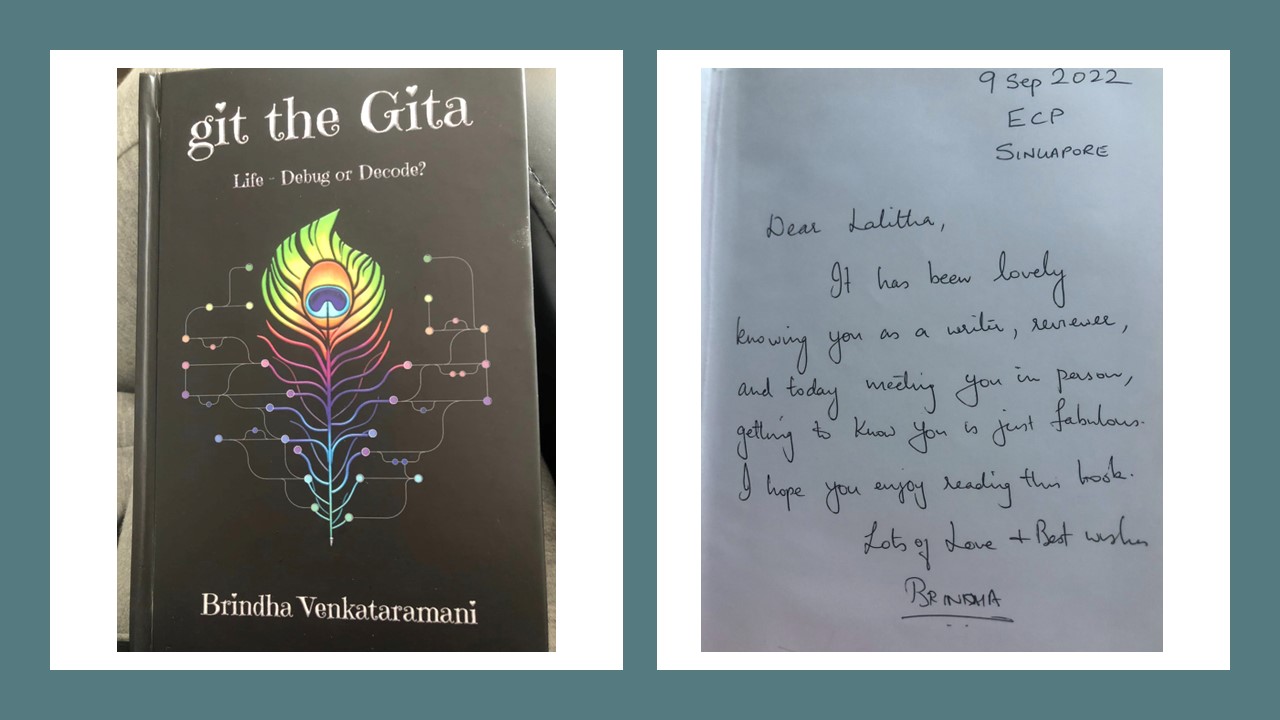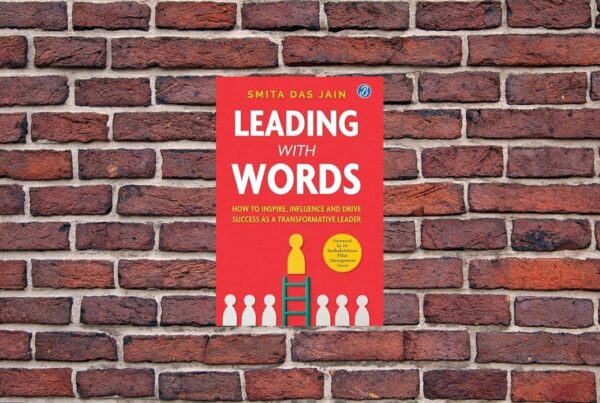Brindha Venkataramani’s git the Gita is a novelette that helps navigate the complexities of modern life and relationships through the lens of the Gita. This book is not a commentary on the Gita or a collection of discourses; it is an attempt to guide readers at both the professional and personal levels.
The book is divided into eighteen chapters. It comes hardbound with glossy pages and fabulous illustrations by Hiranmayi. The beauty of this text is that it does not apply only to software professionals but also to anyone reading the book. The situations are relatable, and the conflicts and tensions resonate with the reader. The resolution prompts the reader to contemplate. Some of the concepts will require re-reading to grasp and fully ingest.
The word git means a software repository, an analogy for the human mind with its collection of good and bad experiences. The author compares solving our problems to debugging code and performing a root cause analysis rather than just touching the surface of the problem and moving on.
The book follows the life of the protagonist, Sid, a modern-day Arjuna, who faces different challenges in his life. His inner voice or ‘the source’ presents an introspective monologue in each chapter. Sid seeks guidance from his project manager, Vyas, a modern-day Krishna, who inspires him and teaches him the way ahead. The software domain becomes Sid’s ‘Kurushetra’ or battleground. Software concepts are blended in and applied to real-world situations.
The book touches on issues like the fear of failure, appraisal systems, performance management, and competitive pressure. There are many analogies in the book, of which my favourite one is this: chimps learn only from repeated trials, whereas humans learn from reflection. The author mentions that this reflective awareness will help one to get out of the infinite loop of misery to find happiness.
As Sid gets promoted in the organization, he makes strides in his personal life as well. He marries his sweetheart and adopts a baby girl. In the course of their parenting journey, the author introduces the readers to the concept of healthy attachment. Parents will resonate with this chapter that teaches us to differentiate between obsessive attachment and healthy attachment.
Other teachings of the Gita like Gunas and Karma are also included in this book. These are illustrated through the experiences of the protagonist’s family- be it through his wife or their attempts to raise their daughter to be a conscientious citizen.
The language is simple, and wherever Sanskrit words are used, meanings are provided, along with a detailed glossary at the end. The last chapter reaches a point in Sid’s journey where he pauses to give back to society and the underprivileged. It concludes with him pondering about liberation. I felt the ending was a tad abrupt and wanted it to continue some more.
This is a book with a deep philosophical and spiritual tone to it, one that makes the reader sit back and think, making it a ‘ready-reckoner’ for over-thinkers and worriers. A good read for someone searching for inner peace and meaning in life.




